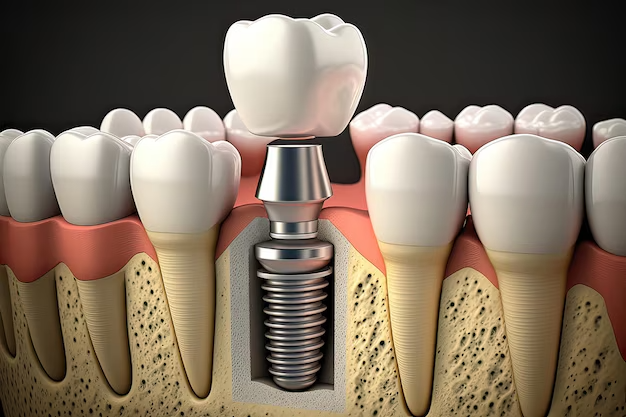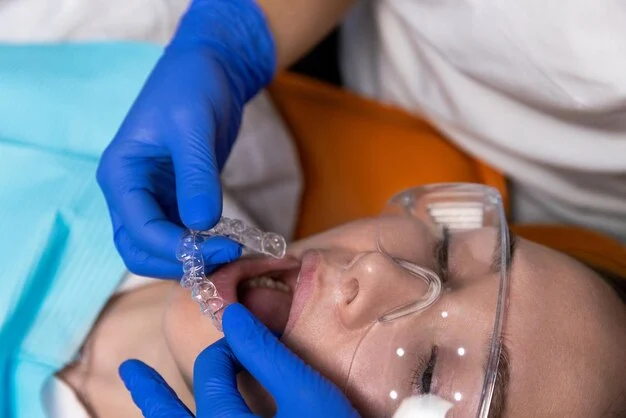In the ever-evolving world of dentistry, composite bonding teeth are one of the best innovations that continue to reshape the landscape of oral care. One such breakthrough that has taken the field by storm is composite bonding for teeth—a revolutionary technique that has become the new standard in dental aesthetics. This article explores the intricacies of composite bonding teeth, its benefits, and its growing popularity among both patients and dental professionals.
Understanding Composite Bonding
Composite bonding is a cosmetic dental procedure that involves the application of a tooth-colored resin material to the surface of a tooth. This versatile material, often made of a mixture of plastic and glass, is carefully sculpted and bonded to the tooth using a special light. The result is a seamless integration of the composite material with the natural tooth, correcting various imperfections and enhancing overall aesthetics.
The Procedure
The procedure for composite bonding teeth is relatively straightforward, making it an attractive option for those seeking quick and effective smile enhancements. First, the dentist will carefully select a shade of composite resin that closely matches the patient’s natural tooth color. The tooth’s surface is then prepared by etching it slightly to create a textured surface for better adhesion.
The resin is applied and sculpted onto the tooth, allowing the dentist to shape and contour it to achieve the desired look. Once the desired shape is achieved, a curing light is used to harden the resin, securing it in place. The final step involves polishing the bonded tooth to ensure a smooth finish that blends seamlessly with the surrounding teeth.
Versatility of Composite Bonding Teeth

One of the key advantages of composite bonding is its versatility. This technique can address a wide range of cosmetic concerns, making it a popular choice for individuals looking to enhance their smiles. Common issues that can be effectively treated with composite bonding include:
- Chipped or Cracked Teeth: Composite bonding is an excellent solution for repairing minor chips and cracks, and restoring the tooth’s natural appearance.
- Gaps Between Teeth: By applying the resin to the sides of adjacent teeth, composite bonding can close small gaps, providing a more uniform and aesthetically pleasing smile.
- Discoloration: Teeth that are stained or discolored can be transformed with composite bonding teeth, giving patients a brighter and whiter smile.
- Misshapen Teeth: Irregularly shaped teeth can be reshaped and contoured with composite bonding, creating a harmonious and balanced smile.
Advantages of Composite Bonding
- Conservative Approach: Unlike some other cosmetic procedures, composite bonding preserves more of the natural tooth structure, making it a conservative option for smile enhancements.
- Quick and Painless: The procedure is typically quick and minimally invasive, often requiring just one visit to the dentist. Patients can leave the office with an instantly improved smile.
- Cost-Effective: Compared to more extensive cosmetic treatments, composite bonding is a cost-effective option for individuals looking to enhance their smiles without breaking the bank.
- Natural Aesthetics: The tooth-colored composite resin mimics the natural appearance of teeth, ensuring that the results look seamless and natural.
Challenges and Considerations
While composite bonding offers numerous benefits, it’s essential to consider its limitations. The material used in bonding is not as resistant to staining as natural teeth, so patients are advised to avoid tobacco and excessive consumption of staining substances like coffee and red wine. Additionally, composite bonding may not be as durable as alternatives like porcelain veneers, and individuals with habits like nail-biting or teeth-grinding may experience wear over time.
The Future of Dental Aesthetics
As technology and materials continue to advance, the future of dental aesthetics holds even more promising possibilities. Composite bonding has already set a high standard for minimally invasive cosmetic dentistry, and ongoing research and development may lead to further improvements in durability, stain resistance, and overall longevity of results.
In conclusion, composite bonding for teeth has emerged as the new standard in dental aesthetics, offering a versatile, conservative, and cost-effective solution for individuals seeking to enhance their smiles. With its ability to address a variety of cosmetic concerns and its quick, painless procedure, composite bonding is likely to remain a popular choice in the ever-evolving field of cosmetic dentistry.
The Patient Experience
One of the most compelling aspects of composite bonding teeth is the positive impact it has on the patient experience. Unlike more invasive procedures, such as crowns or veneers, composite bonding typically requires minimal tooth alteration. Patients often appreciate the conservative approach, as it means less discomfort and a faster recovery time.
Moreover, the quick and painless nature of the procedure contributes to a positive overall experience. Patients can witness a dramatic improvement in the appearance of their teeth in just one visit to the dentist, instilling a sense of confidence and satisfaction. This immediacy is especially appealing for individuals with upcoming events or special occasions where they want to showcase their enhanced smiles.
Artistry in Dentistry
Composite bonding is not merely a dental procedure; it is an art form. Dentists skilled in this technique are akin to artists, carefully sculpting and shaping the composite resin to achieve a result that is not only aesthetically pleasing but also harmonizes with the patient’s facial features. The ability to customize the treatment to each individual’s unique smile is a testament to the artistic dimension of modern dentistry.
Dentists can use composite bonding to create a symphony of changes, addressing multiple concerns in a single session. From refining the shape of a tooth to closing gaps and brightening the overall appearance, composite bonding allows for a comprehensive approach to smile makeovers. This artistic flexibility ensures that patients not only achieve their desired outcomes but also benefit from a customized, natural-looking transformation.
Empowering Smiles
Beyond the physical transformation, composite bonding has a profound impact on the emotional well-being of patients. A smile is a powerful tool for self-expression and connection, and individuals who are insecure about their teeth often find newfound confidence after undergoing composite bonding. This empowerment extends beyond the dental chair, influencing how individuals present themselves in various aspects of life.
Patients often report increased self-esteem and a more positive self-image, which can have cascading effects on their social and professional interactions. A confident smile can be a game-changer, opening doors and fostering a sense of self-assuredness that transcends the initial cosmetic improvements. In this way, composite bonding becomes a catalyst for positive change in both appearance and mindset.
Educating Patients
As composite bonding gains popularity, it is crucial for dental professionals to educate their patients about the procedure’s benefits and limitations. While the longevity of composite bonding teeth may not match that of more invasive alternatives, such as porcelain veneers, the accessibility and versatility of this technique make it an attractive option for many. Setting realistic expectations and providing post-procedure care guidance can enhance patient satisfaction and ensure the longevity of cosmetic improvements.
Dental professionals can also use this opportunity to underscore the importance of good oral hygiene practices. Educating patients about maintaining a healthy lifestyle and regular dental check-ups contributes to the longevity of the composite bonding results. By fostering a collaborative relationship between dentists and patients, the dental community can ensure that composite bonding continues to be a successful and widely embraced solution for dental aesthetics.
Conclusion
In conclusion, composite bonding teeth have emerged as the new standard in dental aesthetics, offering a versatile, conservative, and cost-effective solution for individuals seeking to enhance their smiles. With its ability to address a variety of cosmetic concerns and its quick, painless procedure, composite bonding is likely to remain a popular choice in the ever-evolving field of cosmetic dentistry.












